Jake Elwes, O(a)k Computer, still image, courtesy of the artist.
Interview with Jake Elwes: Finding Poetry in Complex Technologies
Jake Elwes works primarily with AI, looking for the poetry in complex technologies. His first NFT was inspired by a winter walk in Hampstead Heath.
Jake Elwes (b.1993) is a London-based artist whose practice is primarily based around machine learning and artificial intelligence. He looks for the poetry within these complex technologies while at the same time questioning the ethics behind them. He studied at The Slade School of Fine Art, UCL. His works have been exhibited in museums and galleries internationally, including the ZKM, Today Art Museum, Victoria and Albert Museum, New Contemporaries 2017, Ars Electronica 2017 among others.
His inaugural NFT, O(a)k Computer, was created during winter lockdown walks in London’s Hampstead Heath. Accompanied by eerie music generated by an A.I. model trained to create soundtracks based on Hans Zimmer’s complete works, the work captures a moment in time as a fragmented digital memory image.
Elwe’s inaugural NFT was minted on May 24 in exclusive partnership with Verisart and SuperRare as part of 8×8: 8 genesis NFTs by 8 major artists working with AI, code and digital technologies. Bidding closes around 12pm EDT May 27.
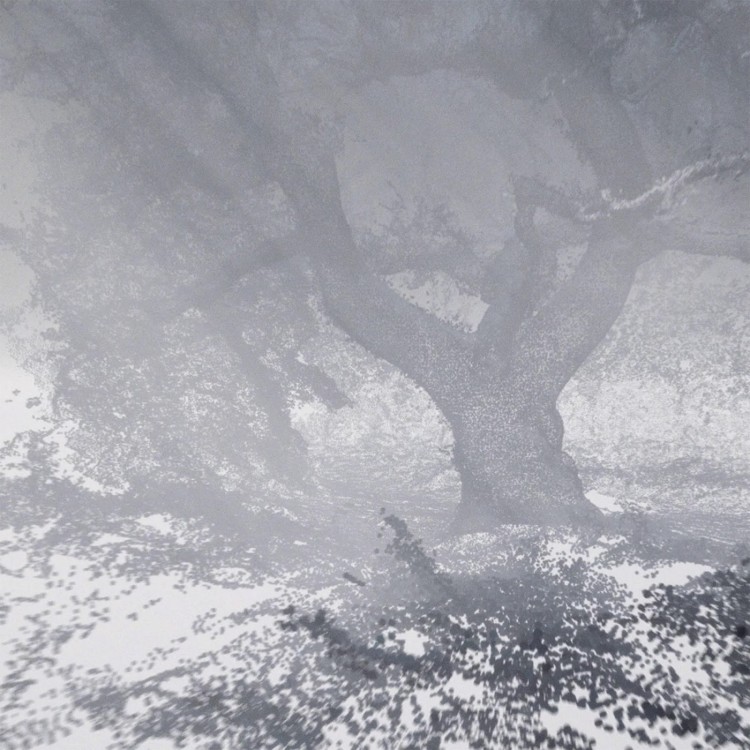
Finding Poetry in Complex Technologies
Jake Elwes is known for working with machine learning, neural networks and complex systems. However, the artist Elwes isn’t interested just in using the technologies in the way they were intended. He explains, “A large part of my practice has always been thinking of ways to find poetry in complex technologies. With machine learning I’m thinking about how can I demystify this technology by recontextualizing it or reframing it? One way of doing it was exploring the intersection of drag performance and artificial intelligence and or reframing AI within a natural landscape.”
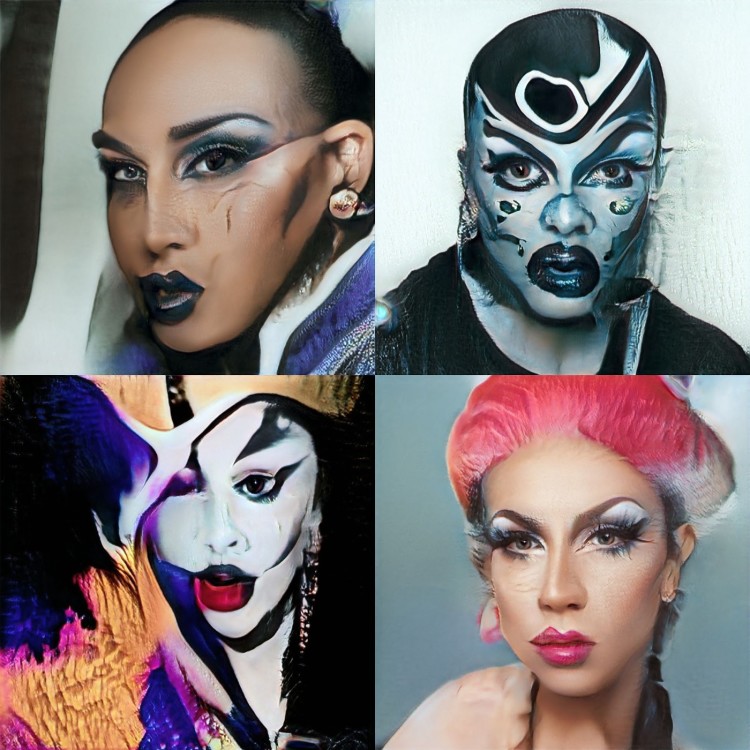
Elwes’ work Queering the Dataset aimed to tackle the lack of representation and diversity in the training datasets often used by facial recognition systems. Elwes retrained the system by introducing images of otherness and oppressed marginalized identities, in this case, of drag and gender-fluid faces. The AI-generated drag characters based on these images, exploring what AI can teach us about drag but also what the neural network has (and hasn’t) learned.
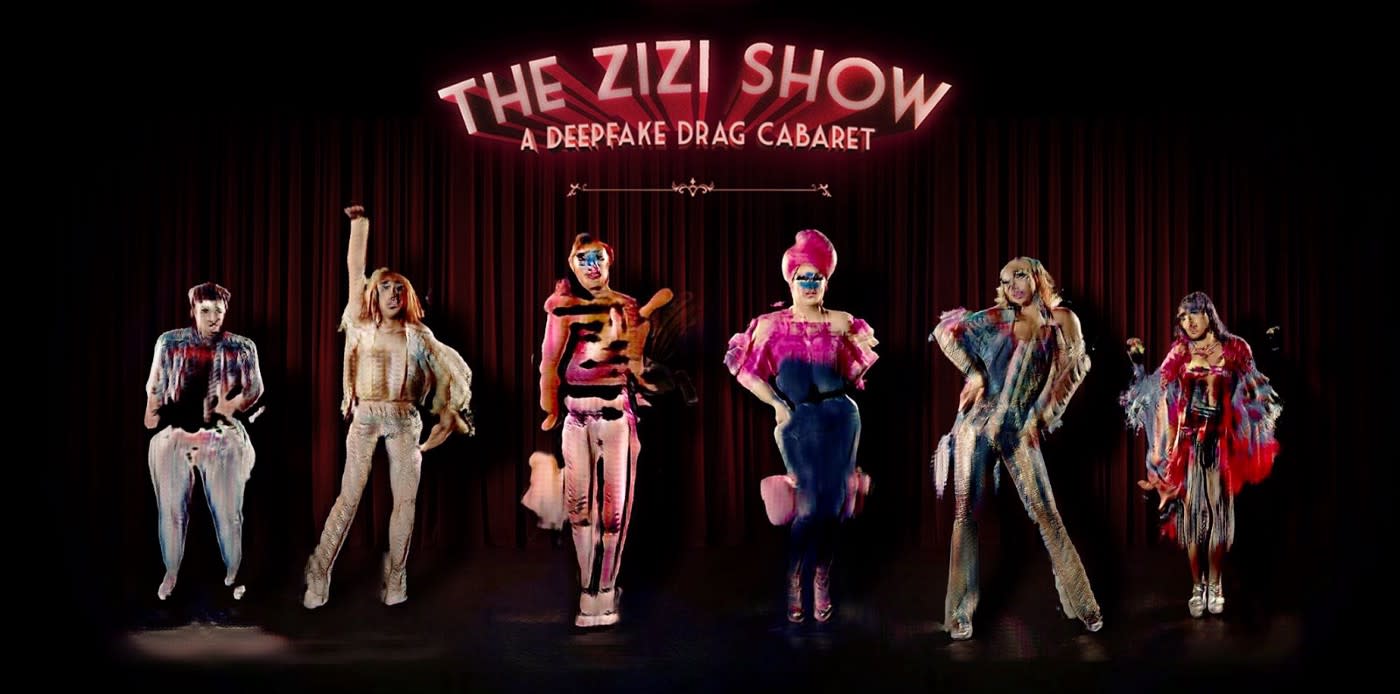
Queering the Dataset is part The Zizi Project, an ongoing series of works exploring the intersection of Artificial Intelligence (A.I.) and drag performance. Other works in the series The Zizi Show and Zizi & Me showcase deepfake drag performances based on neural networks trained with videos of drag performers. Elwes’ upcoming digital artist residency and exhibition with Gazell.io, the digital art arm of Gazelli Art House, will be an opportunity to discover further works in this series. The exhibition will run from July 5th- August 15th at Gazell.io project space in London.

Elwes explains “Working with drag adds a sense of fun, entertainment and play to a really serious subject matter. The project is about deepfakes which can be used to create fake porn and fake news. I’m reclaiming those technologies and thinking about consent, tackling exploitation by reclaiming the technology for queer performance artists as a performance tool.”
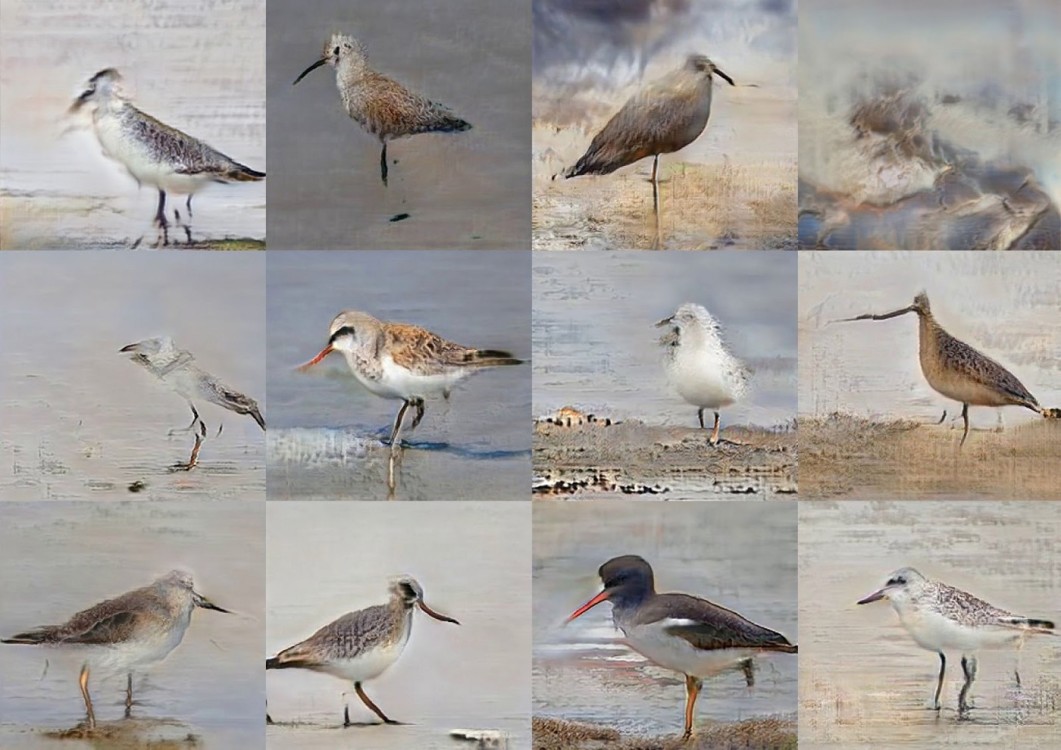
A contrast to Elwes’ focus on drag, CUSP is focused on nature and birds in particular. Elwes creates artificial simulacra birds generated by machine learning algorithm and set them out in the Essex marshes. Speaking about the work, Elwes said “often my work comes back to nature and comes back to mapping and thinking about these spaces which are very important spaces to me. The Essex Marshes is a place I’ve been going to since childhood and that landscape means a lot to me.”
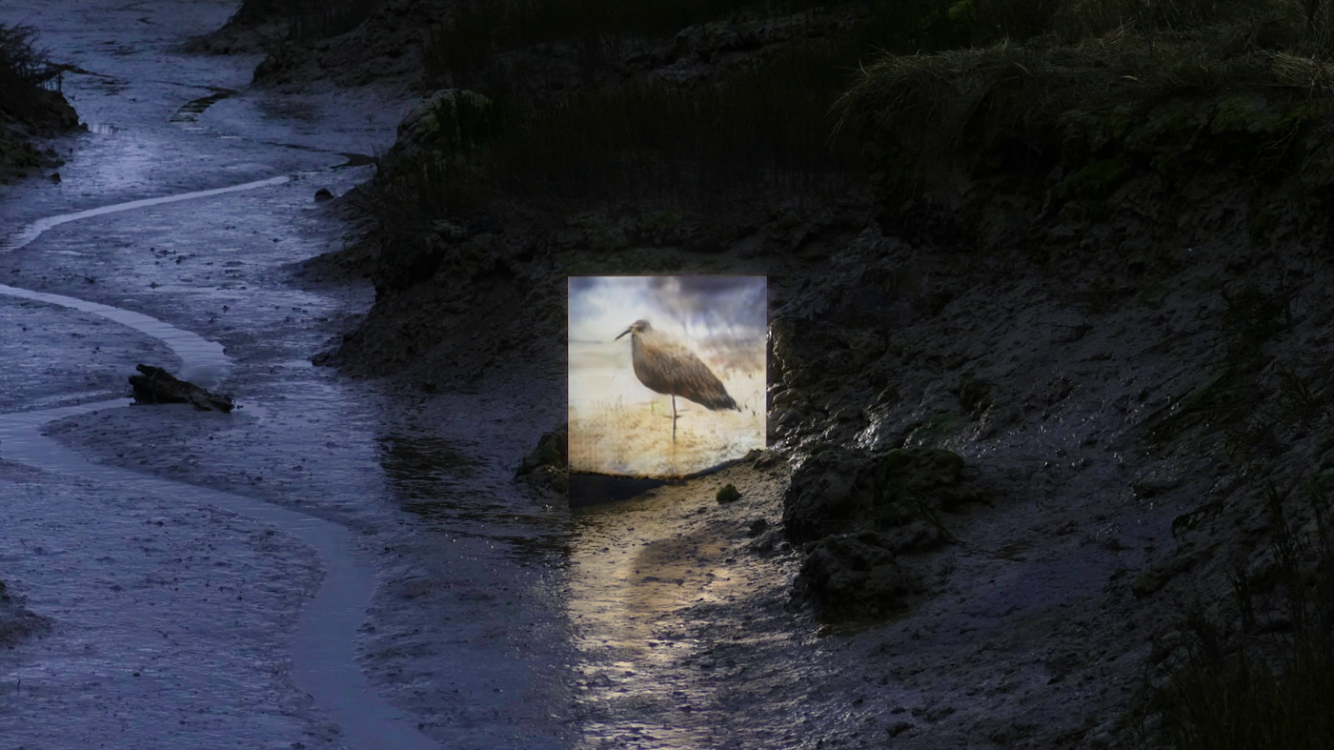
O(a)k Computer
In his inaugural NFT, Jake Elwes’ returns to nature as a subject matter. The artist captured an old oak tree while on a walk during winter lockdown. The photogrammetry data has been rendered as a point cloud using Unreal Engine. The work is a moment frozen in time, distorted and fragmented by the technology which captures it.
VJ: Where did the inspiration for O(a)k Computer come from?
JE: O(a)k Computer is based on a tree in Hampstead Heath, which is very close to where I live, it’s where I was walking every day in lockdown and it had a strange resonance with me.
My dad, Luke Elwes, is a painter and is a big inspiration of mine and a lot of my digital aesthetics come out from my dad’s painterly styles I think. He also lives in North London and has been going to Hampstead Heath every day to do watercolors of the trees. In a way, it was this nice parallel practice where I was going and scanning these trees using photogrammetry and my dad was doing watercolors in a much more traditional medium.

VJ: The scan is accompanied by music generated by an A.I. model, OpenAI’s Jukebox, which has been trained to create soundtracks based on Hans Zimmer’s complete works. Could you tell us a little more about the process?
JE: I always wanted to create and experiment with music and during lockdown I’ve also been thinking about soundtracking my life. Using machine learning for sound is an extraordinary thing, it’s far more complicated in many ways than generating images. It’s been trained on Hans Zimmer’s music and from that it looks at the shape of the sound waves and learns what the probability is that the next part of a sample will go up or down.
It’s also a little bit of a joke as Hans Zimmer is known as being a bit of a factory and turning out soundtracks. So I liked the idea of feeding Zimmer through an A.I. system to generate a Zimmer. What came out was a very eerie and haunting soundtrack. I think it’s very evocative of some of the mental states going through the last year, as well as a sense of isolation and being at one with nature.
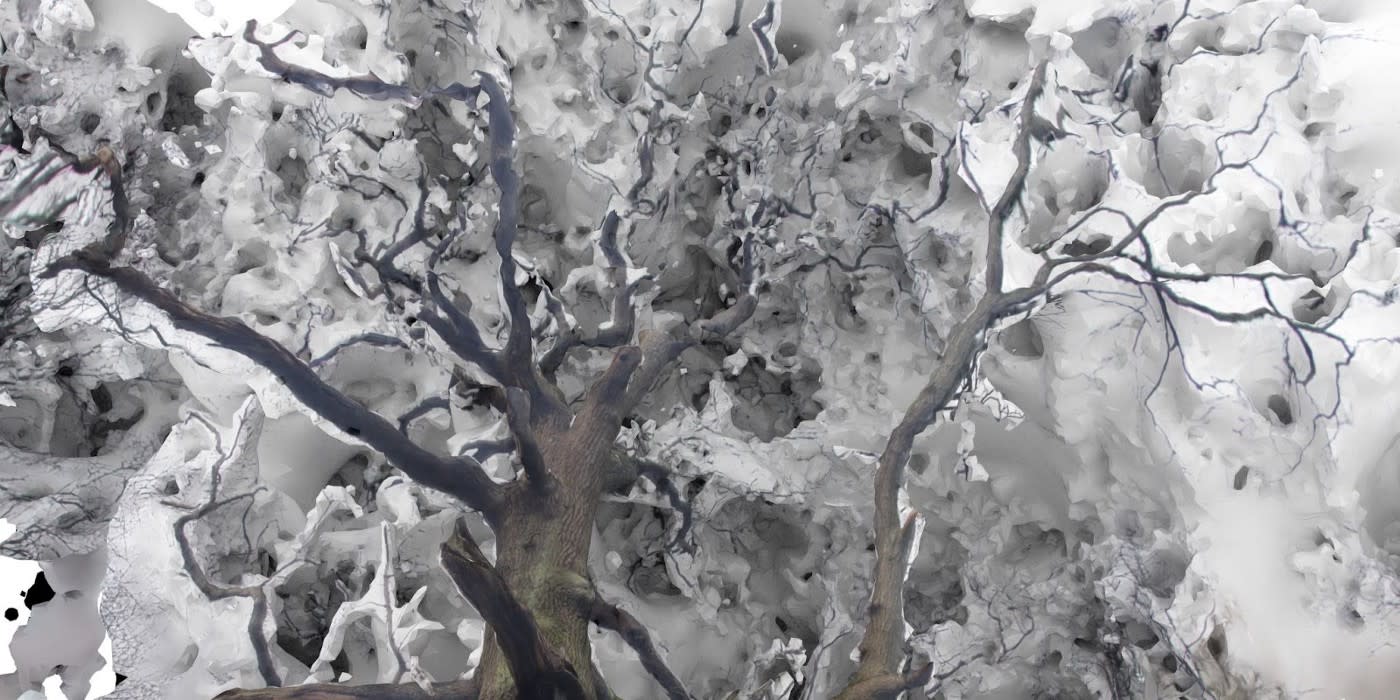
VJ: Where does the title O(a)k Computer come from?
JE: The title O(a)k Computer is a nod to Radiohead’s album Ok Computer. I think it’s important for art to also have a sense of humor. While the work is meditative, the Zimmer soundtrack and the title have a little bit of cheek to them.
VJ: How do technological failures play a role in this work?
JE: Finding the failures in these systems comes up frequently in my work. It’s about finding poetry in these vastly complex digital systems which we can’t always comprehend as humans.
Photogrammetry is often used to create scans from drone data, it’s used by the military and by scientists for mapping or geography. They want to create a perfect 3D model that is functional, whereas as an artist I can do something much more expressive. I can use these technologies in a way that has no purpose, that isn’t functional. I’m appropriating these systems from scientists and I can remove their function and just find poetry and abstraction or sometimes criticality and grit.
I was also thinking in terms of liminal spaces. This is an experience of walking through the Heath, I walked around the tree and created this incomplete scan which fails. I haven’t beautifully cut it out in the same way that scientists would, the mistakes are left in. It started to break down in places where it didn’t have enough data, there are whole areas missing as well as areas that are thrown back in perspective. It creates a very strange digital artifact.
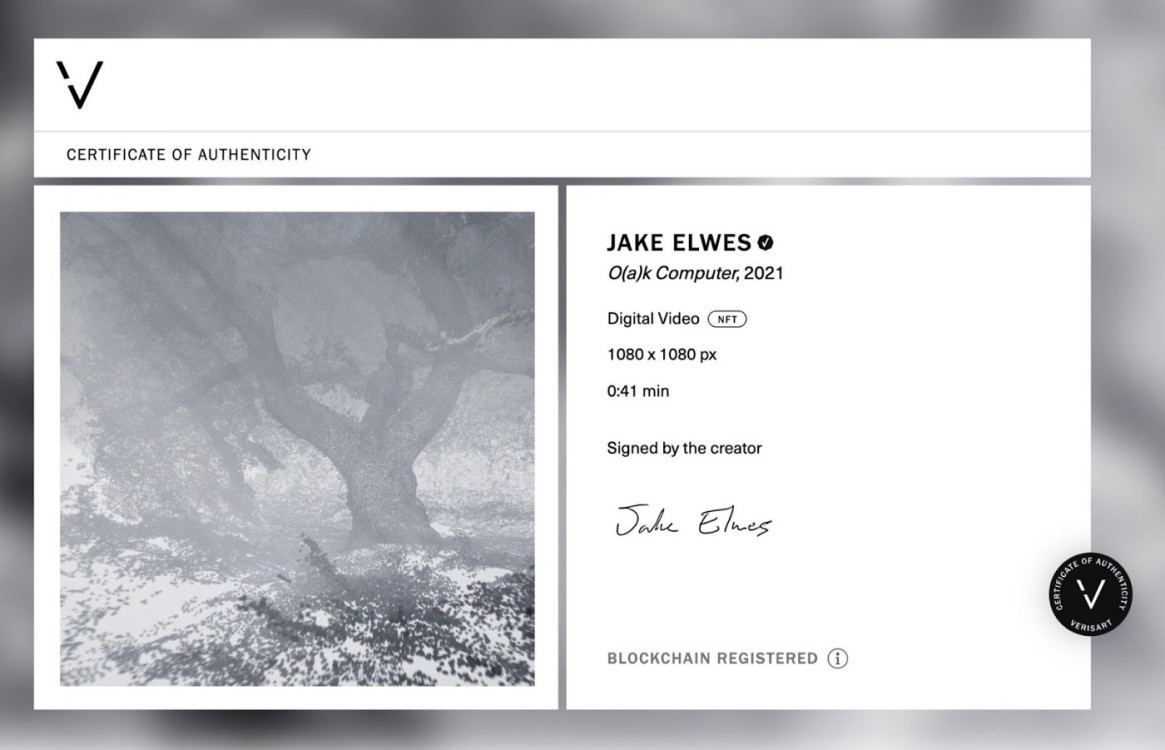
Jake Elwes’s inaugural NFT is certified by Verisart, an award-winning blockchain certification platform. Designed to empower artists to tell the story of their work, the digital certificates include additional images, videos and documents. For collectors, Verisart’s patent-pending Certificates of Authenticity (COA) form an integral part of collecting NFTs. They provide confidence in the identity of the artist and the verified history of the artwork.
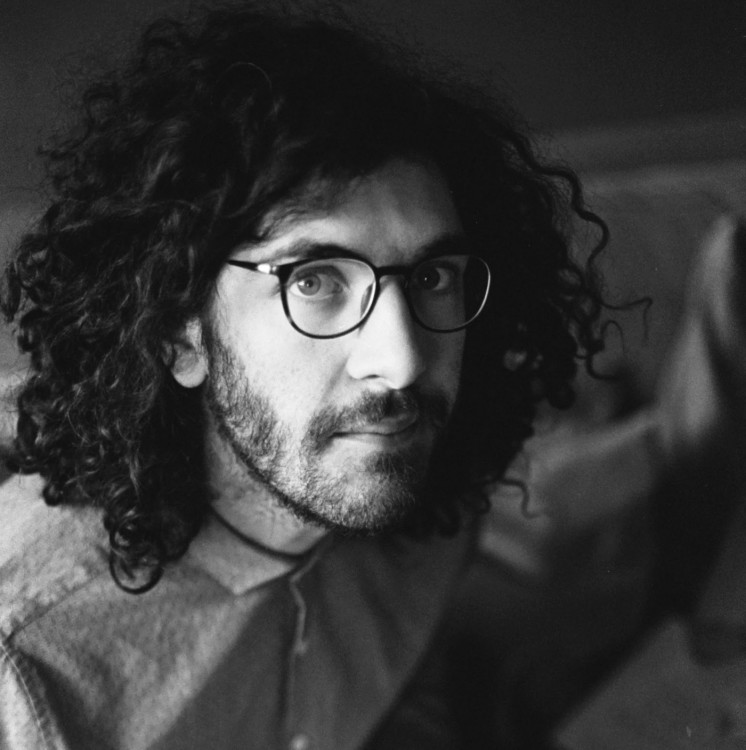
Bidding for Jake Elwes’s inaugural NFT, O(a)k Computer, closes at 12pm EDT on May 27.
Join Jake Elwes on ART TALKS WITH VERISART to hear him discuss life, art and tech with Robert Norton, CEO and co-founder of Verisart. Tuesday, May 25 at 3pm EDT/8pm BST on Clubhouse.